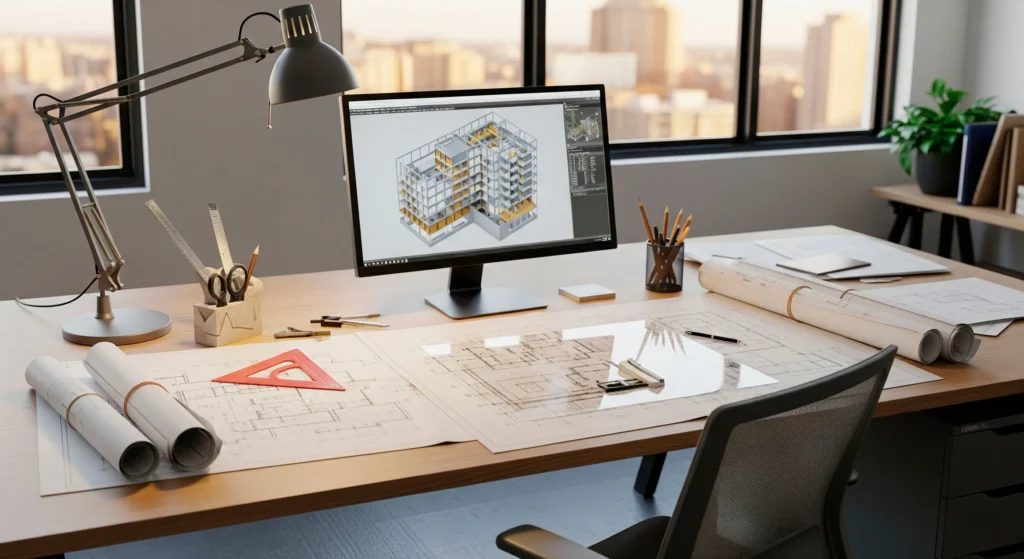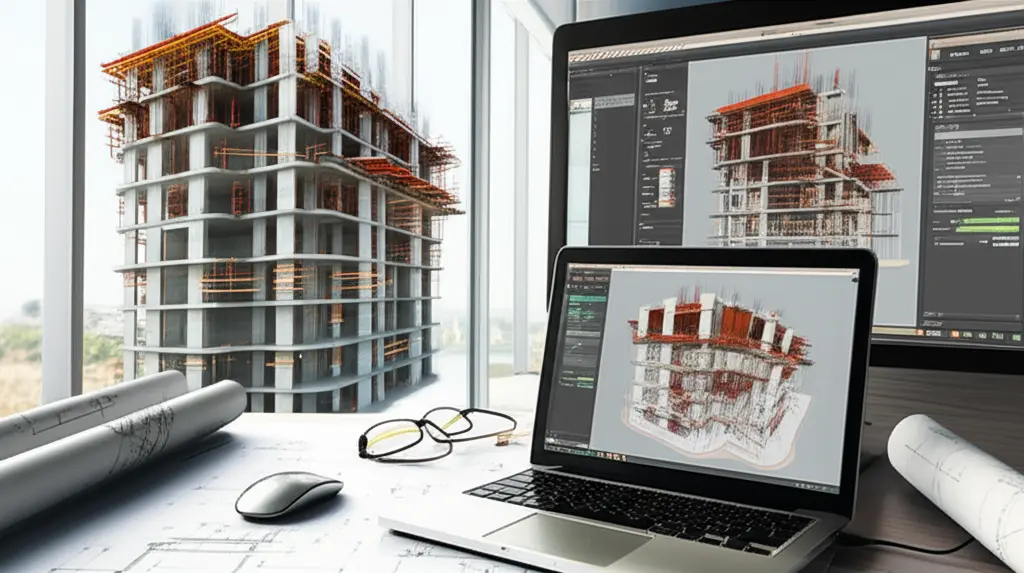How Visualizing Architecture can Improve your Design Process
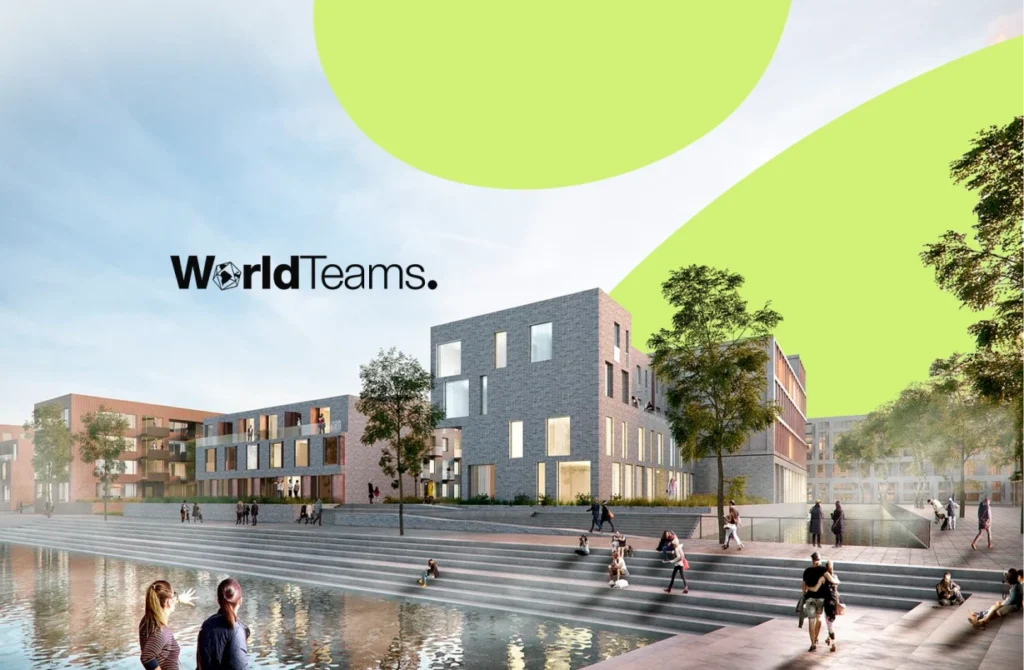
A finished building is a symphony of intention and execution. Sure, there are the nuts and bolts – the concrete, wood, and steel – but the true magic lies in how these elements combine to create a space that functions, inspires, and endures. The architectural design process, with its revisions, approvals, and value engineering, is the crucible where this magic is forged. Within this process, the ability to visualize the end game is absolutely essential
Visualizing architecture is, in essence, making architecture.
This article delves into architectural visualization, exploring how it enhances the design workflow and why mastering this skill is crucial for any architect. We’ll explore the different phases of architectural design, visualization’s role, and how it fosters clear communication with clients, stakeholders, and the public.
From Sketch to Reality: The Power of Visualization
Every architectural journey begins with a sketch – the first tangible visualization of a design concept. It’s a springboard for future iterations, a platform for exploring possibilities and adapting to program changes. Architects are, by nature, visual thinkers and communicators. They rely on their spatial understanding to translate abstract ideas into functional and aesthetically pleasing structures. The sketching phase is the foundation upon which the entire design process builds.
As the project progresses, the architect moves beyond simple sketches, fueled by client feedback, consultant input, and engineering considerations. Here, visualizing architecture takes on a new dimension. Light, materiality, and scale become paramount, demanding a more nuanced approach.
This is where 3D visualization, rendering, and animation come into play. These tools empower architects to “see” their designs in a real-world context, allowing informed decision-making based on a richer set of visual data. From the initial concept to the final construction phase, these visualizations serve as a living document, a clear and concise representation of the design intent, easily understood even by those unfamiliar with the technical details.
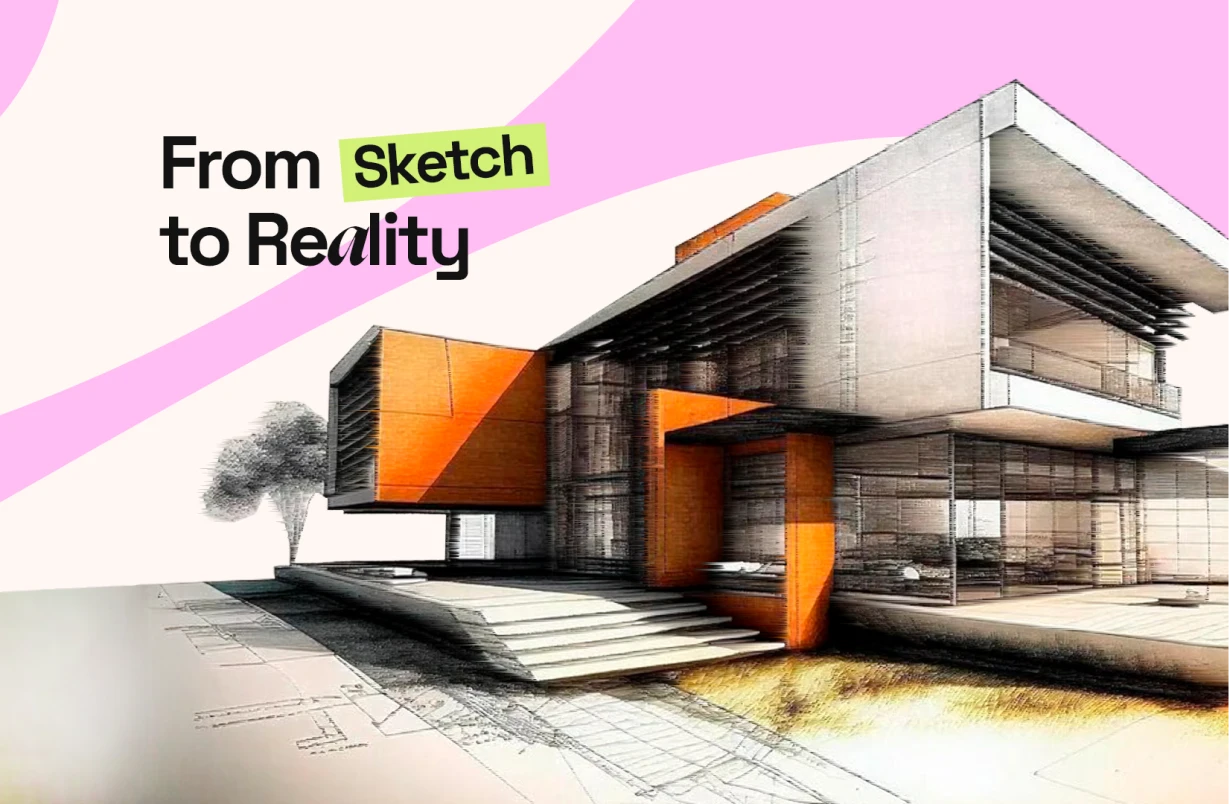
Beyond the Architect: The Importance of Design Communication
The power of visualization extends far beyond aiding the architect and their team. It’s a critical tool for communicating design ideas to a diverse audience: clients, potential residents, and the general public who may be unfamiliar with architecture or have a stake in the project’s outcome.
Think of architectural visualization as a bridge between the architect and everyone else. Your communication falls short if you cannot explain your design’s core principles through a series of renderings, diagrams, and animations. These visual tools should be comprehensive instructions, conveying the rationale behind design decisions and their potential impact on the built environment.
Imagine trying to explain your design process to your grandmother. Your visualizations haven’t done their job if she can’t grasp the basic concepts. This lesson is instilled in aspiring architects from the very beginning. Visualization doesn’t need to be overly complex; think of a toaster or a couch – a single glance reveals its purpose and functionality. If your audience requires excessive explanation, there’s a disconnect between design and presentation.
The Evolving Landscape of Architectural Visualization
Today, 3D renderings and diagrams reign supreme in architectural communication. However, with technology constantly marching forward, architects and designers are increasingly exploring new frontiers – virtual reality (VR) and digital animation are at the forefront.
VR, in particular, holds immense potential for the future of architectural visualization. Imagine placing clients within a virtual space, allowing them to experience the building before a single brick is laid. VR has the power to revolutionize architectural presentation, streamlining the design process in ways unimaginable since the introduction of computer-aided design (CAD) three decades ago.
One thing remains constant: architects will always seek the most effective and efficient methods to showcase their designs. After all, their practices and businesses depend on clear communication and a well-understood vision. By harnessing the power of visualization, architects can translate their creative ideas into successful realities, enriching the built environment for generations to come.
Grow your team and reduce costs with WorldTeams.

When to Consider Outsourcing in Architectural Visualization
In today’s fast-paced world, clients prioritize timely project completion over waiting for a single person to manage every step. This applies to both architects and architectural visualization specialists. The entire process can be quite time-consuming, from initial 2D drawings to final renders.
Large firms often have dedicated departments with specialized teams handling different aspects of the design workflow. This allows them to complete projects in-house. However, for smaller firms and freelancers, the situation is different. Resource limitations often necessitate outsourcing certain tasks to achieve optimal results and meet deadlines.
By focusing on specific strengths, architectural visualization firms can significantly improve the quality of their final product – the renders. With 3D modeling and rendering software constantly evolving, staying competitive requires continuous learning and adaptation. Outsourcing some aspects of the process frees up valuable time and resources to acquire new skills and master the latest software solutions.
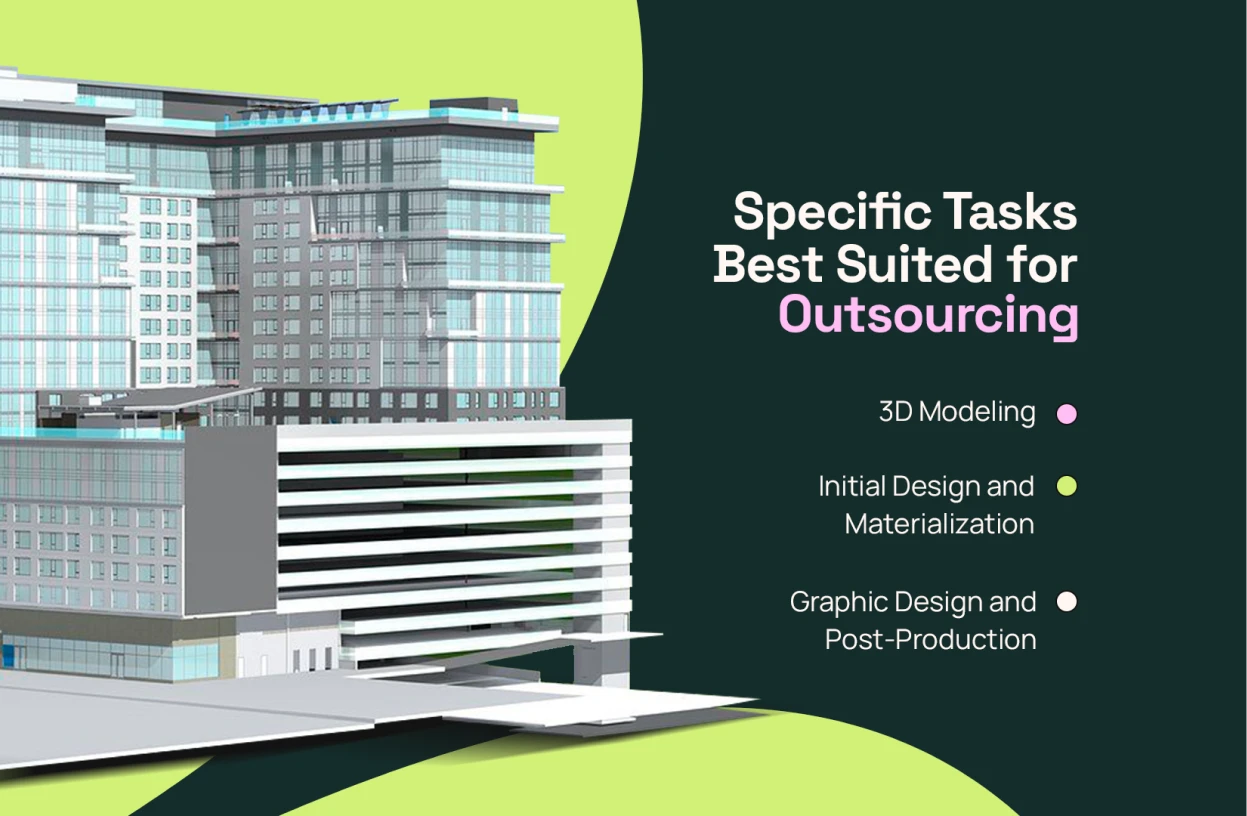
Specific Tasks Best Suited for Outsourcing
1. 3D Modeling
If your primary focus is architectural visualization, you don’t necessarily need to possess an architect’s full skillset. Architectural visualization is all about creating realistic representations of buildings, interiors, and urban plans. However, architectural expertise can be invaluable for the most accurate and credible portrayal.
Precision is paramount in architectural visualization. Even the most visually stunning renders can fall short without properly representing architectural elements, including details like structural components and floor plans. Outsourcing 3D modeling to a qualified architect ensures these elements are depicted accurately, especially if you haven’t recently worked within the architectural field.
2. Initial Design and Materialization
While architectural visualization involves bringing design concepts to life, it’s important to remember that visualization specialists aren’t mind readers. For the most successful outcome, outsourcing the initial design phase is often advisable. Once an architect creates a detailed 3D model, your team can focus on the critical aspects of visualization – materialization, texturing, lighting, and so on. This allows you to leverage your expertise to maximize the impact of the design.
Cost-effectiveness is another major benefit of outsourcing. Hiring a full-time architect can be expensive, and the need for this specialized skill set may not be constant. Freelance architects offer a flexible and cost-effective solution for tackling specific project phases. This approach can help you save money, meet deadlines, and ultimately deliver a superior final product. Outsourcing creates a win-win situation for everyone involved: you save time and money, the client receives high-quality visuals, and the architect can contribute their expertise to elevate the project.
3. Materialization and Texturing (Interior Design)
Materialization and texturing can be outsourced like the design phase, especially when dealing with interior design visualizations. While you wouldn’t expect someone else to handle all the creative aspects, outsourcing these tasks can significantly streamline the workflow for you and your client.
By delegating these processes, you can focus on what you do best—creating visually captivating renders. Remember, no matter how technically impressive a render may be, a lack of strong design elements will ultimately hinder its effectiveness. Outsourcing allows you to dedicate your time and expertise to areas directly impacting the project’s success, freeing you to focus on business growth.
4. Graphic Design and Post-Production
Even if you handle the entire visualization process in-house, outsourcing post-production to a skilled graphic designer can significantly enhance the final product. Programs like Photoshop play a crucial role in architectural visualization, as they allow for the creation of realistic environments that enhance the overall impact of the render.
For instance, combining 3ds Max and V-Ray, a popular software combination for 3D modeling and rendering, might not achieve the desired level of visual realism. Graphic designers possess the expertise to seamlessly integrate your render into a realistic background environment, adding depth and context to the final presentation.
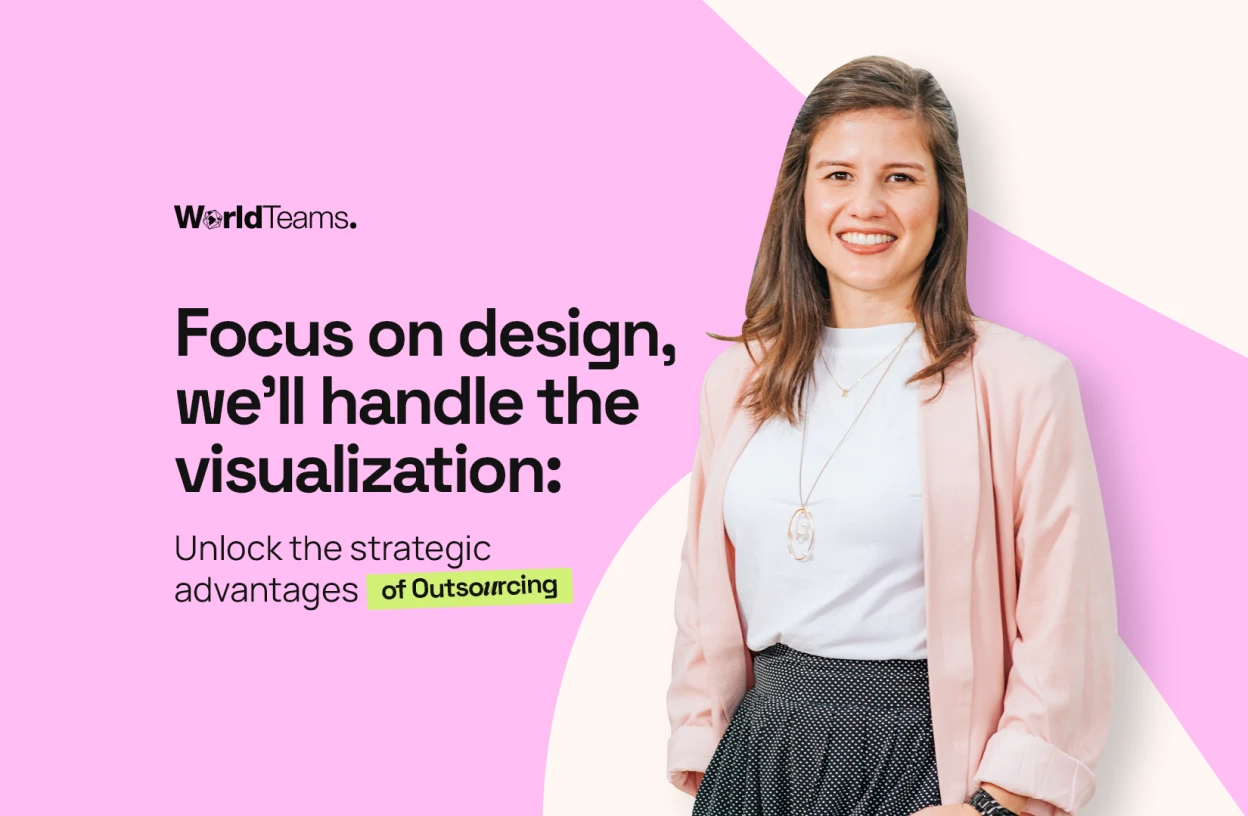
The Strategic Advantage of Outsourcing
Outsourcing architectural services, 3D modeling, and specific visualization tasks can be a strategic decision that unlocks significant advantages, particularly for smaller firms and freelancers. By carefully evaluating your project requirements and identifying the tasks that fall outside your core competencies, you can leverage outsourcing to optimize your workflow and resource allocation. This frees up valuable time and resources that can be invested in:
If you’re considering outsourcing architectural services, WorldTeams is your ideal partner. We will ensure your design vision is translated into clear, compelling visuals that elevate your project and enhance communication with all stakeholders. Book a free demo today, and let’s create amazing things together!







